Finding stinging insects on your property like bees and wasps can be concerning. If you are experiencing a large number of these insects around your home, there is likely a nest nearby.
In this article, we’ll cover the best approach to get rid of wasps and bees so that you and your family are protected. The last thing that you should have to worry about is a dangerous nest lurking on your property and posing a serious risk. There are safe ways that this problem can be addressed.
Honey Bees
Of the bees, honey bees are incredibly important in their role as pollinators. Honey bees live in hives made up of a queen, workers, and drones. While you might not want a honey bee hive on your property, these particular bees are protected and will require a special method of treatment.
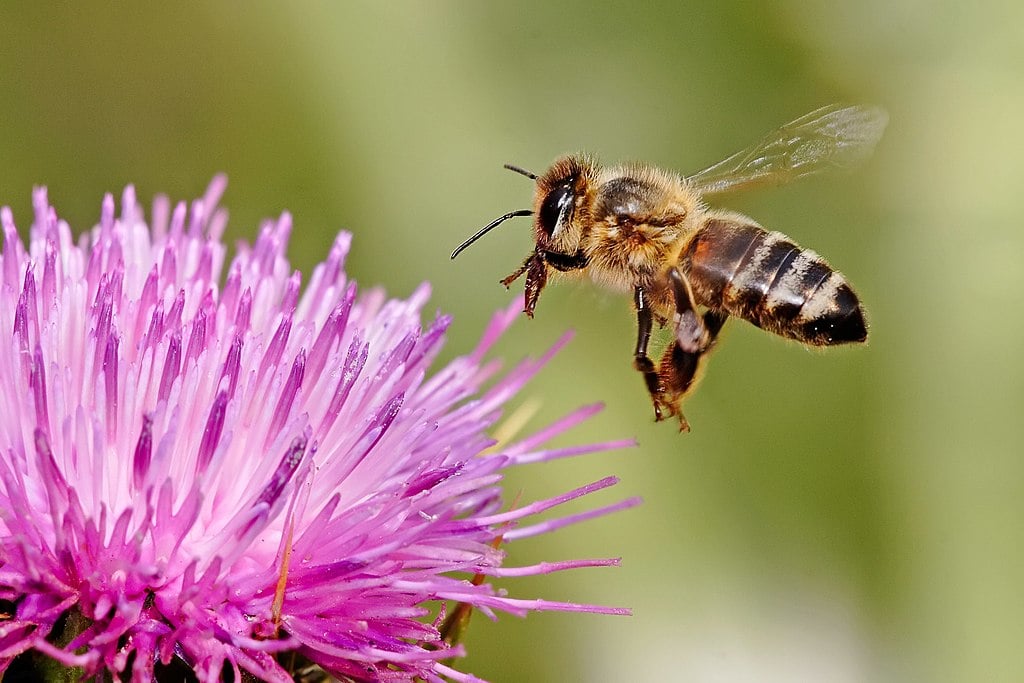
If we are called in for a honey bee hive, we will connect with a local beekeeper for a safe extraction. The goal is to relocate these important colonies.
Carpenter Bees
This particular species of bees is quite large and that can be frightening to people. However, you should know that carpenter bees are not typically aggressive. Only females possess stingers and generally only sting when provoked somehow.
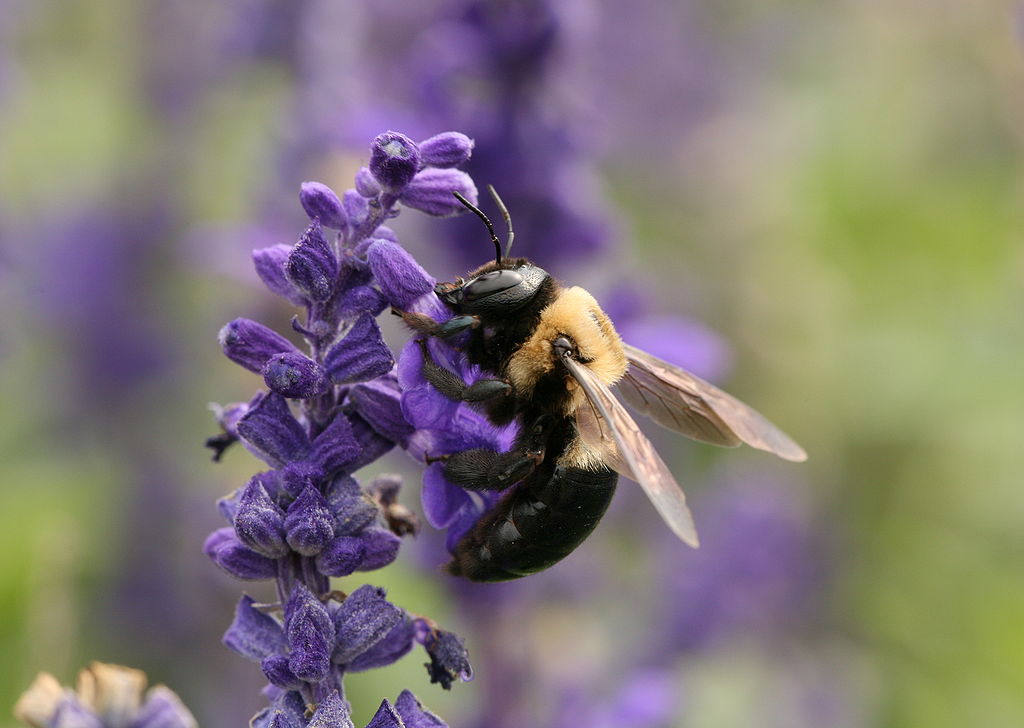
Carpenter bees get their name due to their ability to burrow into wood, which is also what makes them a pest in and around your property. They can cause holes in decks and other wooden structures. These bees are typically an issue in the spring.
Yellowjackets
Yellowjackets are a type of wasp. They live in colonies of up to 4,000 workers. They are known for their black and yellow stripes. These pests can be aggressive.
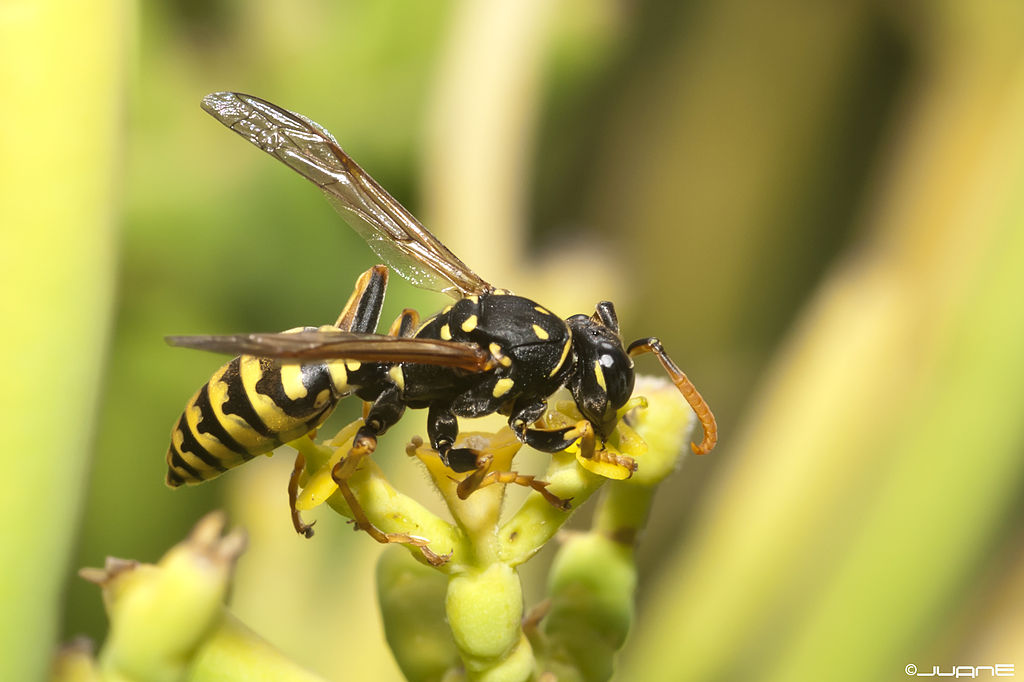
Unfortunately, they like to live where humans live and will even feed on human food (especially meats and sweets) if they can find crumbs. They can be a real pain if you’re trying to enjoy a meal outdoors. Yellowjackets are typically a problem in the summer through the fall. Their nests can be found anywhere from in the ground to behind the siding or fascia of your home.
Paper Wasps
Paper wasps get their name because they build their nests from paper (which they make from chewing up wood and vegetation). Paper wasps can be orange, reddish, or even bright yellow and red.
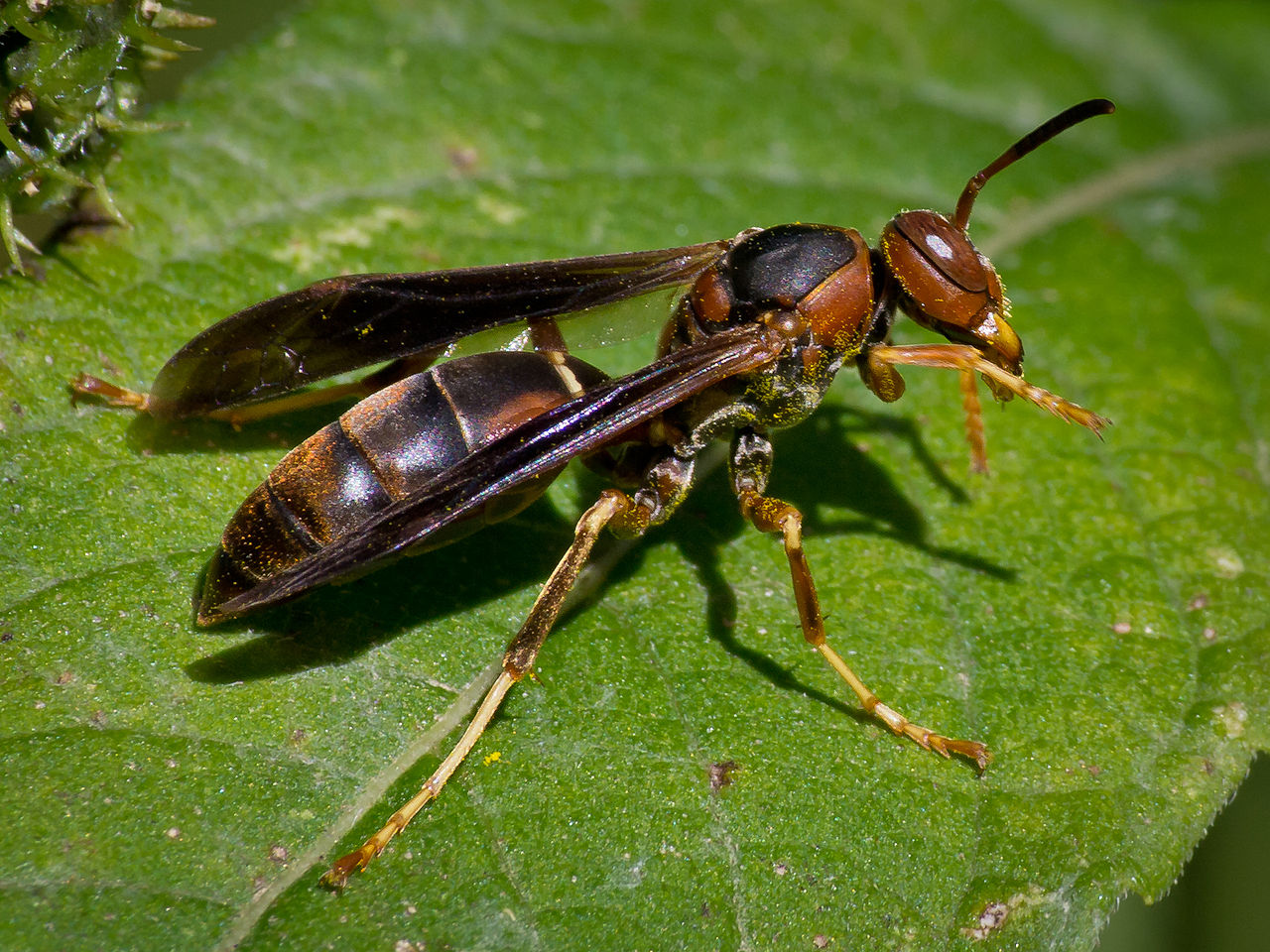
Though not overtly aggressive like the yellowjacket, they will sting any time that they feel their colony is threatened. They pose a threat in the summer through the fall. Most often, their nests are found hanging from the soffit of homes or other structures like playsets.
Hornets
Hornets are a subset of wasps. They are known to build their nests in enclosed spaces. This might mean in the ground or could also mean an attic, garage, under roofs, treetops, or within hollow tree trunks. They sometimes also build nests directly on a tree branch. Their nests can become quite large (size of a basketball) in a short time.
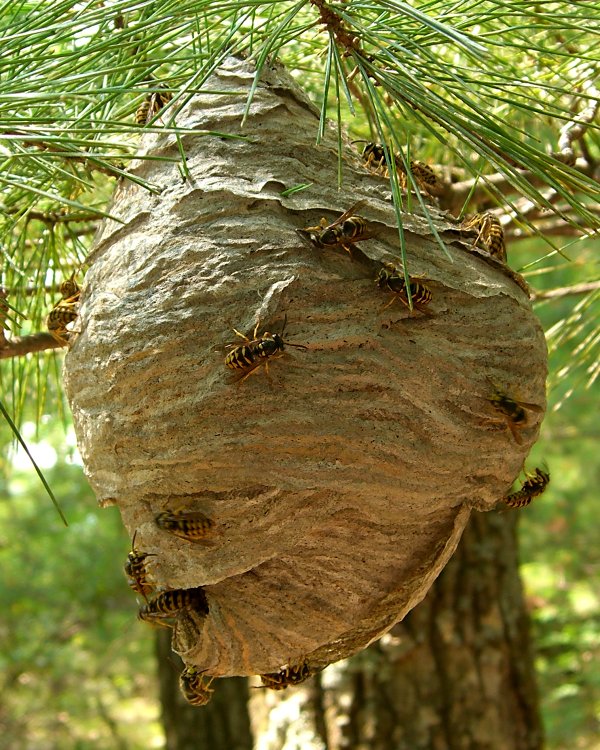
Although the likelihood of getting stung by a hornet is low (they go out of their way to avoid people), their stings can be fatal. The reason that a hornet’s sting is so deadly is the fact that they release more venom per sting than any other stinging insect. They are typically a problem in the summer through the fall.
Cicada Killers
Cicada killers are terrifying to most people given their sheer size. This type of wasp is larger than one inch! These insects come out during the summer and (as their name implies) feed on cicadas. These insects are active between July and September.
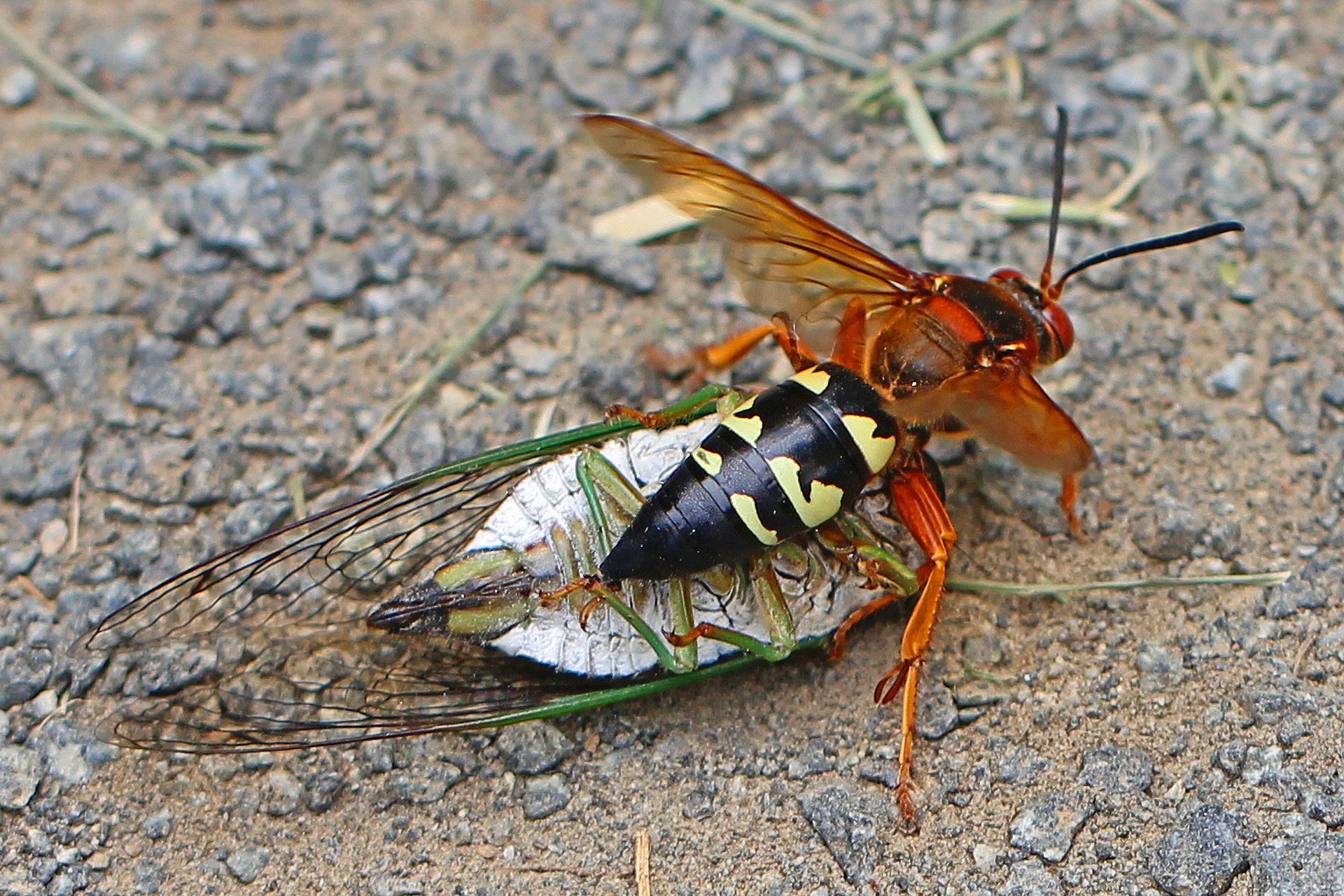
Unlike the other wasps, these stinging insects are solitary ground dwellers. They dig a hole approximately ½” wide and several inches deep. There a pair of cicada killers reside and bring home stung cicadas to feed their hatching larvae.
A DIY Approach to Killing Wasps and Bees
Let’s cut to the chase with a spoiler alert—Do not take matters into your own hands with this one.
Tackling a bee or wasp problem on your own can be seriously dangerous. Unfortunately, we know that many homeowners often assume they can handle it themselves because we’ve seen the photos and heard the horror stories from clients who have tried to tackle an issue and ended up calling us after it went awry.
One of the most obvious reasons why a DIY approach is dangerous is the fact that bees and wasps “swarm” in large numbers when they perceive a threat. Since some colonies can be in the thousands, being stung is a terrifying prospect. Even if you are not allergic, receiving dozens and dozens of stings could easily prove to be fatal.
Something as simple as bumping a nest is enough to anger the inhabitants.
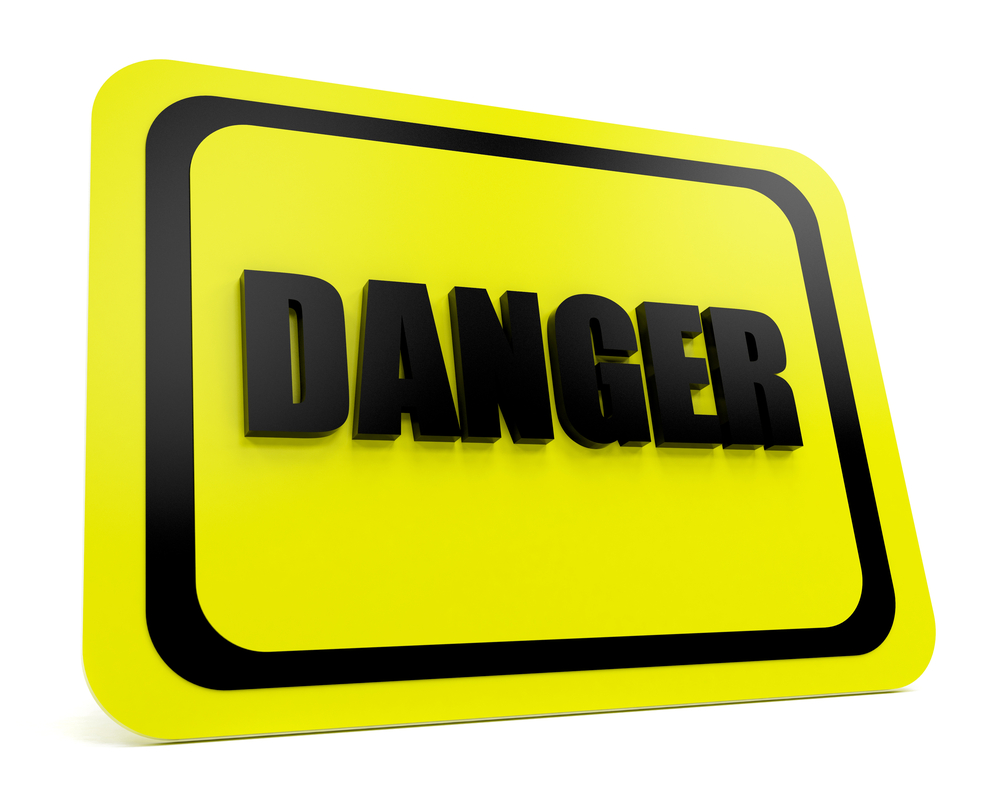
Beyond the risk of getting stung, many people don’t think about the fact that the products designed for killing bees and wasps are also quite risky. They include toxic chemicals that you probably wouldn’t want to be handling if you understood just how dangerous they can be.
Even if you do go ahead and spray a chemical, you might find it’s not as effective as you had hoped. We’ve gotten these calls, too. For instance, perhaps shortly after you’ve sprayed, it rains. Now the chemical is getting watered down and maybe it’s even dripping out onto your patio furniture.
The bottom line is, a DIY approach is not advised. Plus, most of the DIY materials you will buy at your local home improvement store are some of the most toxic materials on the market. You don’t need to use such products for results.
Here’s how a professional can address this problem.
A Professional Approach to Getting Rid of Wasps and Bees
Before we go any further, we want to reiterate that at Joshua Tree, we are doing everything we can to relocate honey bee hives in a safe way. We understand that many of our clients are really concerned about the declining honey bee population and frankly, we are, too. We commend you for your concern.
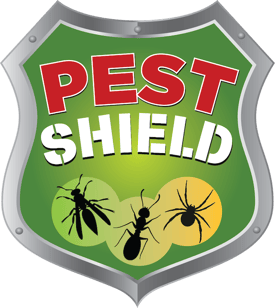 Beyond honeybees, we are addressing other stinging insect nests with a professional dust application. This might mean us climbing a ladder and getting relatively close to these stinging insects (another reason why this is truly left to professionals). A duster will be utilized to fill the entire nest with dust, which is lethal to these stinging insects.
Beyond honeybees, we are addressing other stinging insect nests with a professional dust application. This might mean us climbing a ladder and getting relatively close to these stinging insects (another reason why this is truly left to professionals). A duster will be utilized to fill the entire nest with dust, which is lethal to these stinging insects.
Whereas many liquid applications can be messy, this is a clean method of killing wasps and bees that will also keep you and your family safe. You don’t have to worry about liquids dripping or oozing later on.
At Joshua Tree, we can offer one-time stinging insect treatments if you find a nest on your property and you want it taken care of. However, most people like to invest in our Quarterly Pest Control program going forward as this will give them future protection and peace of mind.
With Quarterly Pest Control, we are also taking proactive steps such as treatments around windows, door fixtures, shutters, soffit areas, and other accessible places where bees and wasps like to make nests. This will deter nests from even being built. We’ll also go through and remove old nests that are lingering on your property.
Let Us Handle Your Worries
Any time that you spot what you perceive to be a nest or colony on your property, it’s always safest to call in an expert for a professional opinion. It’s simply not worth the risk in tackling these types of problems on your own.
By choosing to work with Joshua Tree for your pest control needs, we can handle your stinging insect problems and ultimately eliminate your worries. You’ll know that your problem is being handled property and that your family will be safe as a result.
With the right approach to pest control, you’ll gain valuable peace of mind. If you’re interested in having your home inspected for potential pest issues, contact us for a free quote or give us a call at 833-JTE-TREE.
Image sources: honey bee, carpenter bees, yellowjacket, paper wasp, hornet nest, cicada killer



